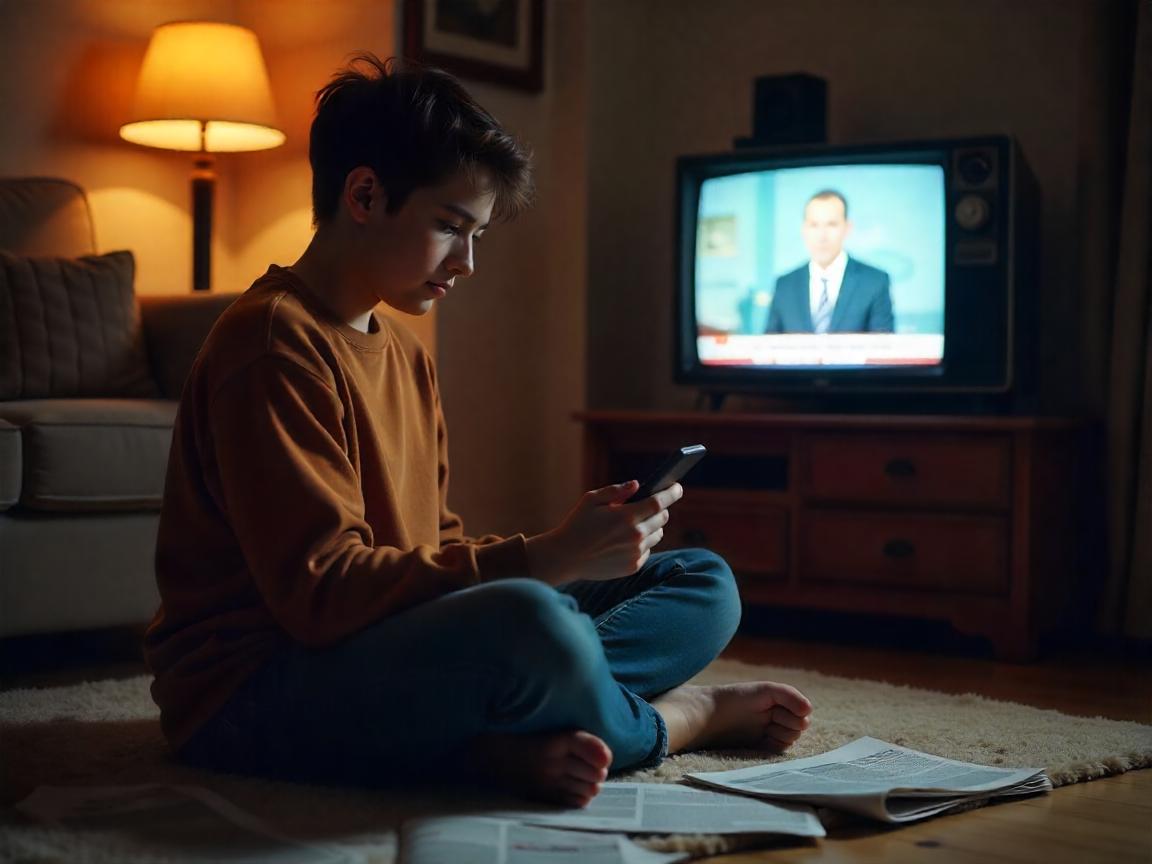
The Death of the Evening Broadcast?
Do you remember when evening news was a family tradition you sat in the kitchen with your television on in the background and could hear it quietly and loudly hum along as the family sat gathered around the dinner table? Those are days, which are almost quaint now. Nowadays, a 22-year old is more likely to wake up and scroll Tik Tok to check on the elections than to read a newspaper or to switch on the CNN. Actually, the recent 2024 report by Pew Research Center reveals that only 15 per cent of American youths below the age of 30 use conventional television to get political news in the country.
It is a severe drop compared to 10 years ago, and this reminds us of how the fractures in the trust and attention have happened during the digital age. You may have already asked yourself what this will do to future of civic engagement, and you are not alone. Most of us who have spent decades with legacy newsrooms are struggling with the fact that those well-honed broadcasts have become algorithmic streams and viral videos.
The Numbers Behind the Freefall
As the traditional news consumption becomes lower, the negative tendency has solid grounds. According to the Reuters Institute Digital News Report, print newspaper circ has fallen by a grotesque 35 percent between 2010 and 2023. Even giants such as The Washington Post have declared they will do massive job cuts in 2025 on the excuse of the dip of subscriptions despite a good number of visitors to their websites. In the meantime, the social media is swallowing attention like never before. Try imagining a world where more than 67 percent of 18 to 24 year olds would claim they mostly access political information via such websites as Instagram, YouTube or Tik Tok.
To be honest, if you still know an editor, who believes that the simple news headline on the first page is going to make a difference, you have to look past this. Young voters are not only leaving, they are developing whole new habits in areas that can barely be reached by traditional outlets.
- Reuters Institute 2024: 67 percentage of Gen Z like social feeds more than news in TV.
- Pew Research Center: Print circulation harmed by a loss of 35 percent since 2010.
- Axios Media Trends: 42 percent of millennials have greater trust in digital-native brands than they do legacy brands.
From Anchors to Avatars: Who Holds the Megaphone Now?
Enter into any high school or college campus and you will hear Taylor Lorenz or Philip DeFranco or Emma Chamberlain before you can hear Anderson Cooper. These makers have discovered a secret that old brands constantly ignore, authenticity trumps authority all the time. The Gen Z trusted more in people like them, rather than institutions, by a score of 1.6 to 1 according to a 2024 Edelman Trust Barometer study.
Consider the 2024 U.S election cycle. In TikTok videos with the hashtag Election2024, the number of views exceeded 15 billion. It was not a typo, 15 billion. Political influencers released quick-hitting explainers, denial of viral misinformation, and even exclusive video chats with legislative contestants. Being a former political reporter who later reported in print dailies, I am frank to say that I am in two minds. I am irritated to think about the rate and the triviality of this kind of coverage, and at the same time I am impressed by how quickly it reaches new voters who would by no means find 60 minutes to attend a panel discussion.
The Double-Edged Sword of Personalized News Feeds
The personalization is the currency of the day, but at what a price! It is easy to end up in the echo chambers once your news feed is aware of what you are likely to click and do before you make the decision. That is the paradox: the more choice the less thought diversity. The Reuters institute observed that 38 percent of young people felt overwhelmed by the quantity of mixed details and some have decided to abandon the process altogether.
- The Brazilian Election of 2022: Disinformation in WhatsApp reached 100 million people.
- Center for Countering Digital Hate (2024): The TikTok algorithms even within a few minutes can display a biased content.
This fact necessitates a candid discussion concerning the duty of the platform as well as media literacy. I had made a poll inquiring with groups of college students whether or not they could list the name of the editor-in-chief of any of the large outlets. There was no raising of hands. Nonetheless, each and every individual would be able to mention not less than three TikTokers in the list addressing politics in the comprehensible way.
Conclusion: Rethinking Political Journalism Before It’s Too Late
The decline in old news consumption does not just affect the industry but also serves as a cultural wake-up call. We can not afford to allow algorithms to be singular arbiters of the dialogue of the community because it will include only harmful subjects. Yes, political information is now accessible online. They have also made it too fragmented to the extent of becoming dangerous. My advice? It is time to redefine journalism in a way that it can connect to the young audience on their fields without compromising the standards and the sense of common reality that democracy necessarily requires.
Whether traditional news could survive is not a question. It is the question whether it is ready to change and become obsolete or not.